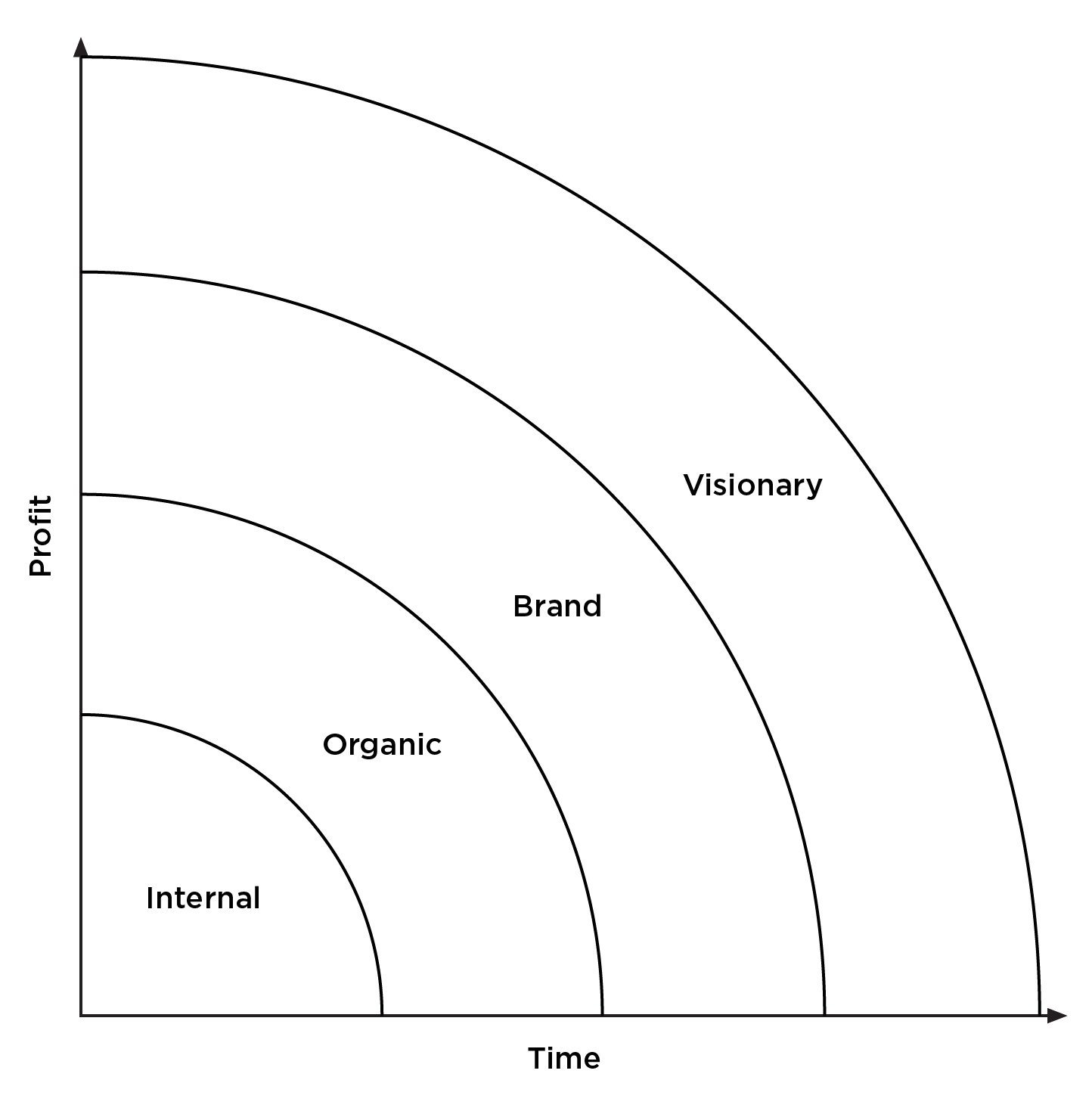Growth Strategy: Cultivating the systems and strategies that actually work to grow your top- and bottom-line
Every business wants to grow, but it doesn't happen by accident. It requires leadership, strategic thinking, and a willingness to invest in the future.
According to Guidant, most businesses still feel like the pandemic’s impact on their business is not over. At the same time, 83.4% believe they will survive the pandemic, and 41% want to expand by investing in digital marketing. If growing your business keeps you up at night, you've come to the right place. But growing your organization can be difficult and doesn't happen due to wishful thinking. At Mixline Media, we understand what it means to work tirelessly to build your business. We work with our clients to unlock big ideas from data-driven insights that pave the way for long-term innovations and success. We partner with you to identify your objectives and goals and assemble a holistic growth strategy that aligns with your organization's unique vision, objectives, and KPIs.
What is a growth strategy?
A growth strategy is an organization's vision and approach to realizing its goals for expansion. Take the Tesla Model 3 for example, which begins with an overall product vision and brand mission. Growing your business generally is not a one-time event or initiative (like a "viral" marketing campaign); it's an ongoing journey that requires continuous assessment, refinement, and investment. A genuinely effective growth strategy can increase market share, awareness, customer loyalty, sales, revenue, acquiring assets, and improving the organization's products or services. And while the planning and processes you use can vary from company to company, the overall approach is the same.
Why is consistent growth so difficult to achieve?
Despite flat revenue expectations, regulatory change, and constant churn — one of your primary mandates as a leader in any organization is achieving consistent growth. However, few businesses have ever consistently achieved simultaneous top- and bottom-line gains. According to Gartner, at least 35% of growth initiatives never meet their original business case, and only 17% of projects meet or exceed expectations.
What are the four types of growth strategy?
As a business owner, CEO, or CFO in your organization, you may be lucky to have several avenues for growth. We can organize your growth strategies the following categories:
Four types of growth strategies
1. Internal growth
By cutting costs and reallocating funds to growth-centered departments and initiatives, organizations can create internal growth. To grow internally, you need to invest in optimizing your company operations with operational excellence and automation. A popular strategy for inner growth is a digital transformation that increases efficiency and overall profitability by taking disparate tasks and automating them through various business systems. Internal business operations often suffer from a digital divide (i.e., skill gap), and systems development can be challenging because it forces leaders to make cuts and reallocate funds to more appropriate investments.
2. Organic growth
Organizations consistently improve top- and bottom-line profitability in organic growth, using internal resources to improve ROI. Organic growth tends to focus on the core business model that has been established. It comes in the form of consistent customer acquisition or improving the profitability of assets.
Organic growth is attractive but slow to realize because it relies on profitability and avoids fundraising and debt. Business leaders are wise to reinvest the proceeds into the products, marketing, and sales that drove organic growth in the first place.
2. Brand strategy
Brand strategy drives growth by considering every stakeholder and company vision and positioning for long-term opportunities. An effective brand strategy provides a central, unifying idea around which all behaviors, operations, and communications are aligned. A new idea, product innovation, or upstream opportunity can attract investors, customers, partners, and high-value knowledge workers. The best brand strategies are so differentiated and powerful that they create loyal brand advocates and deflect the competition.
Brand strategies that are designed for high-growth organizations involve brand extensions and brand leveraging to pursue adjacent product and market opportunities. Brand visionaries tend to pursue transformative growth with the right mix of creativity, strategic thinking, and business acumen.
4. Visionary growth marketing
Marketing-driven growth tends to focus on demand generation in one of 4 areas: 1. People; 2. Products; 3. Places; 4. Promotions. Attracting a new customer audience or adding more value to your current customer base could be innovative and cost-effective ways to increase revenue. Product innovations don't typically require ground-breaking technology. You can realize product innovation by simply starting with a human-centered approach and applying technology in a new way to solve a problem people are suffering from now.
Small forms of product innovations that lead to exponential growth could be as simple as increasing your order value by bundling products together — which could add more value to the customer experience if the products are frequently used and or purchased together. Geographic expansion often brings new audiences to your storefront, and timely promotions can be an effective way to build awareness and encourage buying decisions.
What is acquisition strategy?
An acquisition growth strategy is when a company chooses to grow either by acquiring new customers or acquiring another business. Business-to-business (B2B) acquisitions can involve buying a competitor, buying a company that compliments the first company, or by entering into a new market.
Mergers, partnerships, acquisitions
Mergers, partnerships, and acquisitions can feel riskier than other growth tactics, but they can come with incredibly high rewards. Partnerships and acquisitions enable your organization to grow the same way a marketing-driven growth strategy can, but they can happen faster. A well-executed merger can bring new markets (and increased market share), expand your product catalog, and attract new customers.
What is customer acquisition?
When a business advertises its products or services for sale to potential consumers with the goal of acquiring them it is considered business-to-consumer (B2C) marketing. Customer acquisition marketing involves a process of bringing new customers or new users into your business. It’s a key metric for growth-stage startups and mature businesses alike. Customer acquisition is the foundation of growth and represents the market potential of your company.
Infographic: The full customer acquisition and customer retention lifecycle journey
Demand generation goes beyond the point of sale.
Customer acquisition is a disciplined process that involves generating demand to enter customers into the customer journey. Demand generation is a marketing strategy focused on building reliable brand awareness that leads to interest, consideration, purchasing, and ultimately customer loyalty and advocacy.
Unlike lead generation, demand gen seizes every opportunity to build brand awareness and create brand advocates. It starts with an all-encompassing brand strategy and considers every step along the buyer’s journey:
Build awareness
Create interest
Foster consideration
Call to action
Nurture and retain
Engender loyalty
Promote advocacy
What is more important? Customer Acquisition or retention?
The answer, of course, is "it depends." If you are a startup with no customers, then acquisition should be your focus. You need to get people in the door (or onto your website or using your app) before you can even think about retention. Potential customers and new users bring revenue you can use to invest in customer retention.
If you're a growth-stage company, then you need to focus on both acquisition and retention. You can't grow if you're not acquiring new customers, but if you're not retaining the ones you have, all your growth will be for naught. The key is to find a balance between the two: spend enough to acquire new customers while also reinvesting in your current ones.
Why is customer retention the ultimate growth strategy?
If you're a mature company, then retention should be your primary focus. You need to keep your existing customers happy and engaged so they continue doing business with you. Otherwise, all your growth will come from acquisition, which is much more difficult (and expensive) than retaining customers.
Case study: Vivint Solar | Community
How a community platform created growth through customer retention, loyalty, and advocacy.
Continue reading
Follow these best practices if you're an executive leader in your organization.
It can be challenging to know where to invest, and funding the right areas of your organization can go a long way to achieving sustainable growth.
As the CEO, CMO, or even the CFO of your company, you may be responsible for allocating growth resources to projects and departments within your organization. It's essential to focus growth resources in areas like sales and marketing, which are primarily responsible for growth. Influential business leaders tend to think of their marketing mix in portfolio terms to focus resources on smart capital allocation, high-growth opportunities, and cutting the correct costs.
Increase cost agility to enable smart reallocation decisions
Target low-risk, high-reward experiments
Encourage transformational growth bets in your products, marketing, and sales.
Prioritize consistent customer acquisition
Invest in digital transformation to enhance profitability
6 simple and easy-to-implement marketing growth strategies that work every time
Establish the right brand vision and invest in communications to drive company culture
Invest in business analytics and accountability measures
Emphasize scalable demand generation and customer acquisition through digital marketing
Develop a content strategy that involves every step along your customer journey
Cut costs in your operations by automating repetitive job tasks and outsourcing.
Form strategic partnerships
How to design your growth strategy
Horizon planning is a popular method for designing your growth strategy. It involves looking at your business in portfolio terms and considering your products, brands, channels, and markets as “assets.”
While managing a business, most of us are looking for ways to grow and add more value to our customers. But if you don’t have much experience designing an organizational growth strategy, that’s not a problem. Here’s what working with a team of growth-minded experts will look like:
Identify your opportunities and global objectives.
Quantify your potential outcomes (financially and otherwise) to ensure your objectives are in line with your company vision, mission, promise, and values
Define your strategy in terms of what opportunities you will focus on, how you will fund your growth initiatives, and how to eliminate potential distractions
Define measurable goals and key performance indicators (KPIs)
Install measurement and accountability
Plan your course and execute
Seven degrees of freedom
The seven degrees of freedom is a method designed by McKinsey to provide ideas for your initiative pipeline. Chief Marketing Officers (CMOs) use it as a template with their teams to fill their opportunity pipeline.
9-box method for growth planning
Using the 9-box planning method, you can prioritize each initiative based on profit potential and weigh it against the time it could take to execute any given initiative.
Are you ready to unlock massive growth for your business?
Work with a digital marketing and growth strategy expert and see what a difference the right strategy can make.
More from Mixline Media
Get inspired with a collection of original content, ideas, case studies, toolkits, templates, and more to help unlock the growth of your business.












